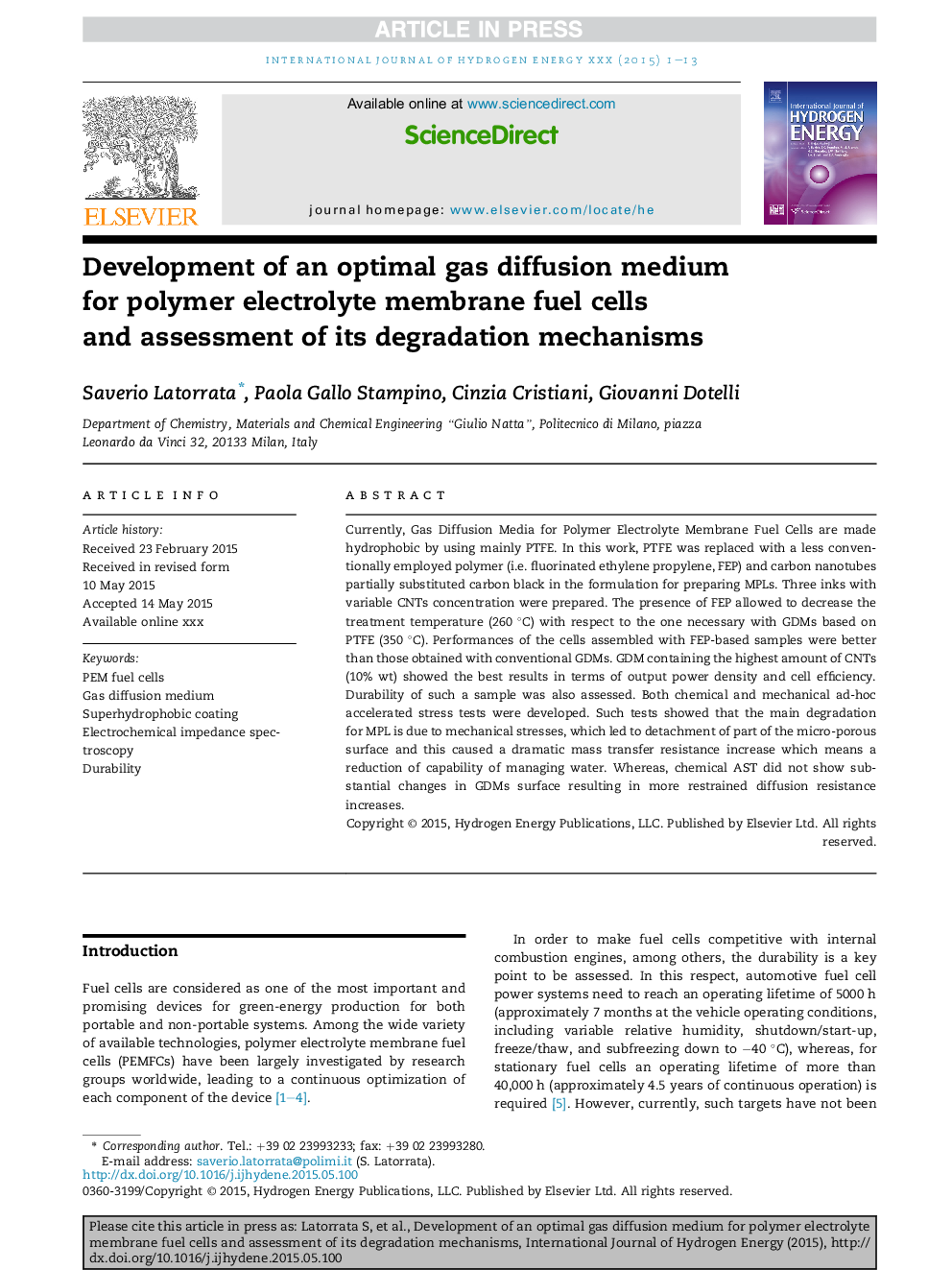| Article ID | Journal | Published Year | Pages | File Type |
|---|---|---|---|---|
| 7713840 | International Journal of Hydrogen Energy | 2015 | 13 Pages |
Abstract
Currently, Gas Diffusion Media for Polymer Electrolyte Membrane Fuel Cells are made hydrophobic by using mainly PTFE. In this work, PTFE was replaced with a less conventionally employed polymer (i.e. fluorinated ethylene propylene, FEP) and carbon nanotubes partially substituted carbon black in the formulation for preparing MPLs. Three inks with variable CNTs concentration were prepared. The presence of FEP allowed to decrease the treatment temperature (260 °C) with respect to the one necessary with GDMs based on PTFE (350 °C). Performances of the cells assembled with FEP-based samples were better than those obtained with conventional GDMs. GDM containing the highest amount of CNTs (10% wt) showed the best results in terms of output power density and cell efficiency. Durability of such a sample was also assessed. Both chemical and mechanical ad-hoc accelerated stress tests were developed. Such tests showed that the main degradation for MPL is due to mechanical stresses, which led to detachment of part of the micro-porous surface and this caused a dramatic mass transfer resistance increase which means a reduction of capability of managing water. Whereas, chemical AST did not show substantial changes in GDMs surface resulting in more restrained diffusion resistance increases.
Related Topics
Physical Sciences and Engineering
Chemistry
Electrochemistry
Authors
Saverio Latorrata, Paola Gallo Stampino, Cinzia Cristiani, Giovanni Dotelli,
